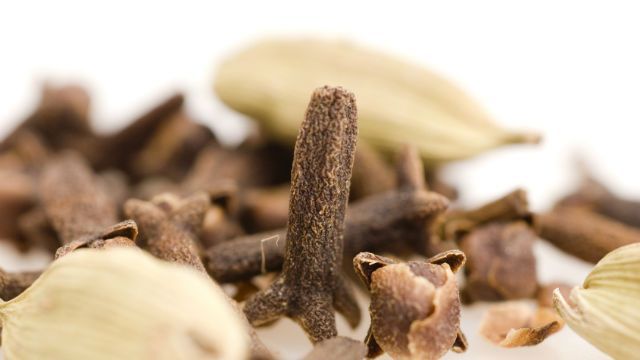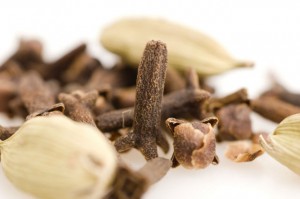
Cardamom, known in India as the ‘Queen of Spices,’ originated in the evergreen rainforests of southern India. This relative of ginger and turmeric has been celebrated since ancient times for its potent therapeutic properties, as well as its culinary value in the cuisines of India, Nepal, Pakistan and China.
These seed pods were harvested from wild plants until British colonists in India began to cultivate them in the 19th century, setting up cardamom plantations across India. Cardamom has a history of traditional medicinal use for its antispasmodic, antiseptic, diuretic and tonic properties, among many others. In Ayurvedic medicine, it is used to treat digestive issues, mouth ulcers and alleviating depression.
The cardamom plant, which grows to about four meters long, bears seed pods of up to four centimeters. There are two main types of cardamom, Amomum and Elettaria. Amomum pods are larger, dark brown, and have a rougher pod coating, while Elettaria pods are smaller and are light green in color. Cardamom has an intense and distinctive flavor, reminiscent of a mix of pepper, citrus and camphor.
Nutritional Profile
Each seed of this exotic spice is packed with:
- Calcium
- Fiber
- Iron
- Magnesium
- Manganese
- Phosphorus
- Potassium
- Protein
- Vitamins B1, B2, B3 and B6
- Vitamin C
- Zinc
Health Benefits
Cardamom seeds and cardamom oil have many noted antioxidant properties. Like its cousin ginger, cardamom is an anti-inflammatory food that can both help to reduce pain from inflammatory conditions such as arthritis, and may prevent many chronic diseases which have inflammation at their core. Also similarly to ginger, cardamom can help to ease digestive disturbances such as nausea, constipation and heartburn. It can also help to stimulate appetite.
Much of cardamom’s potent antibacterial, antiviral and antifungal characteristics are due to its concentration of volatile essential oils. These include citronellol, myrcene, limonene, pinene, terpinolene, geraniol and many others. Volatile essential oils both help to prevent infections, and may combat existing ones. Traditionally, cardamom has been used to fight the common cold and flu, as well as bronchitis. These compounds are the subject of a body of research investigating their anticarcinogenic properties.
 Cardamom is a great addition to a detox or cleanse, because of its volatile essential oils, nutrient content, and diuretic properties. Its diuretic nature works to flush toxins, waste and excess sodium from the kidneys, bladder and urinary tract. The fiber content of cardamom helps to eliminate toxins from the digestive tract, and is also heart-healthy, as it can help to lower blood pressure and prevent the clogging of arteries.
Cardamom is a great addition to a detox or cleanse, because of its volatile essential oils, nutrient content, and diuretic properties. Its diuretic nature works to flush toxins, waste and excess sodium from the kidneys, bladder and urinary tract. The fiber content of cardamom helps to eliminate toxins from the digestive tract, and is also heart-healthy, as it can help to lower blood pressure and prevent the clogging of arteries.
An added benefit: cardamom seeds can freshen your breath like no mint ever could. In India, it is a custom to chew a cardamom seed after a meal.
-The Alternative Daily
Sources:
http://www.nutrition-and-you.com/cardamom.html
http://www.sunwarrior.com/news/15-health-benefits-of-cardamom
http://www.kew.org/plant-cultures/plants/cardamom_history.html

